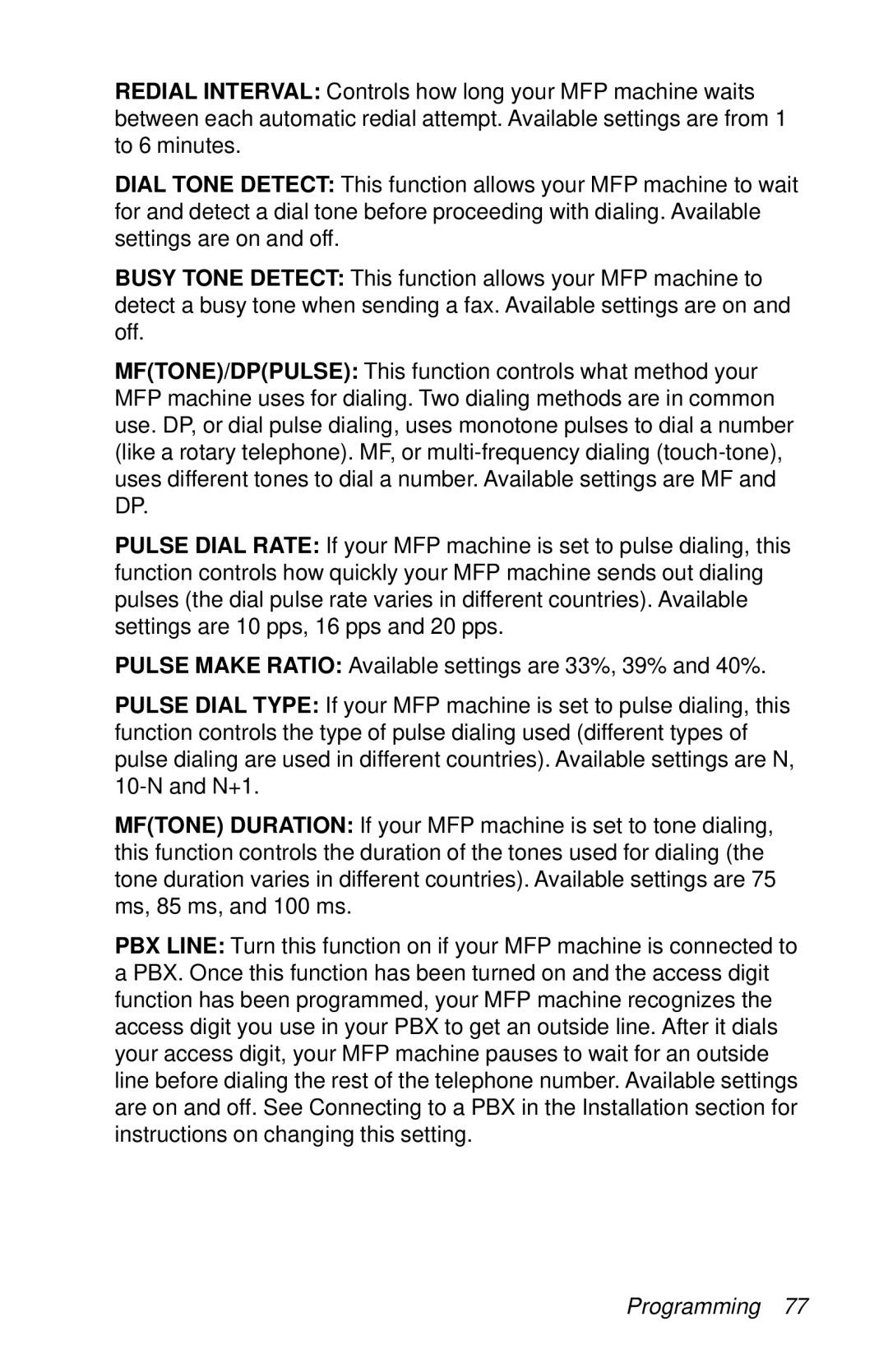REDIAL INTERVAL: Controls how long your MFP machine waits between each automatic redial attempt. Available settings are from 1 to 6 minutes.
DIAL TONE DETECT: This function allows your MFP machine to wait for and detect a dial tone before proceeding with dialing. Available settings are on and off.
BUSY TONE DETECT: This function allows your MFP machine to detect a busy tone when sending a fax. Available settings are on and off.
MF(TONE)/DP(PULSE): This function controls what method your MFP machine uses for dialing. Two dialing methods are in common use. DP, or dial pulse dialing, uses monotone pulses to dial a number (like a rotary telephone). MF, or
PULSE DIAL RATE: If your MFP machine is set to pulse dialing, this function controls how quickly your MFP machine sends out dialing pulses (the dial pulse rate varies in different countries). Available settings are 10 pps, 16 pps and 20 pps.
PULSE MAKE RATIO: Available settings are 33%, 39% and 40%.
PULSE DIAL TYPE: If your MFP machine is set to pulse dialing, this function controls the type of pulse dialing used (different types of pulse dialing are used in different countries). Available settings are N,
MF(TONE) DURATION: If your MFP machine is set to tone dialing, this function controls the duration of the tones used for dialing (the tone duration varies in different countries). Available settings are 75 ms, 85 ms, and 100 ms.
PBX LINE: Turn this function on if your MFP machine is connected to a PBX. Once this function has been turned on and the access digit function has been programmed, your MFP machine recognizes the access digit you use in your PBX to get an outside line. After it dials your access digit, your MFP machine pauses to wait for an outside line before dialing the rest of the telephone number. Available settings are on and off. See Connecting to a PBX in the Installation section for instructions on changing this setting.
